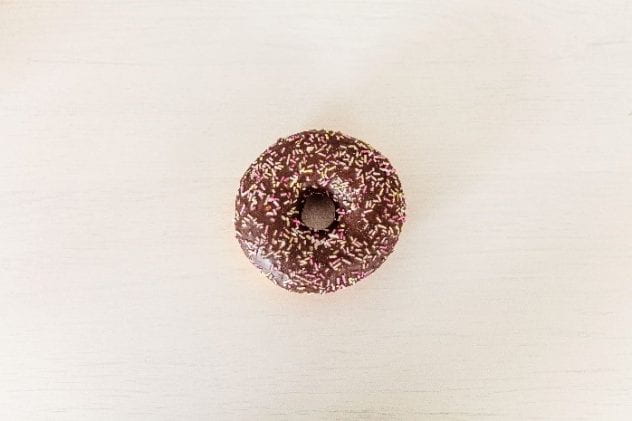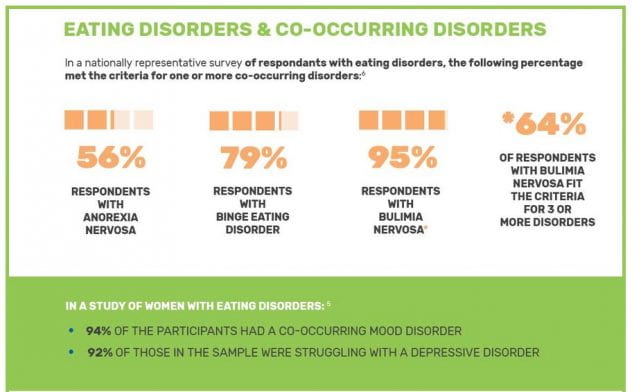By: Keara Hozella
The content of this blog may be sensitive to some readers. If you’re struggling with an eating disorder, visit the National Eating Disorder Association’s website or call the hotline at 1-800-931-2237.
My definition of recovery started when I returned home from the fall semester during my sophomore year, noticeably thinner than when I had left in August. Terrified of any food with carbs, protein, fat, and most of all, any significant number of calories, I truly was a shell of myself. I wasn’t prone to cracking a smile and preferred to sit off to the side with my carbonated, artificially flavored water in at least three layers of clothing (the former my choice, the latter a necessity as my weight loss had made me intolerant to cold).
A week later, I sat in a doctor’s office—one that specialized in the treatment of eating disorders—as she told me I couldn’t return to campus. She listed all the reasons it wasn’t medically safe for me to go back to school, including the typical mental and physical symptoms of anorexia nervosa, such as extreme weight loss, fatigue, thinning hair, intolerance of cold, exercising excessively, preoccupation with food, irritability, and insomnia. She also mentioned she would be arranging a spot for me to begin inpatient treatment within four days.
Return to School or Recover
My world as I had known it was rocked. I wanted to go back to school, where I could continue to soak up as much as possible from my English classes, reading, and writing (and continuing to feed my eating disorder while starving myself – a secret I came to realize I wasn’t keeping that well). As I sat in the office, I focused on all the things I would be losing: my apartment’s closet with the scale where I weighed myself four times a day, the ability to closely monitor what food I ate and when, my hour-long sessions at the gym, the strict timeline I had set for myself on when I would graduate, apply to grad schools, and hopefully get accepted into my dream program of choice – one that was a niche program on Shakespeare that required nearly perfect GRE scores. I also ruminated on what I wouldn’t gain (namely, weight). I do remember feeling relief that someone saw how hard the charade was to keep up, and how many numbers and calculations ran through my head daily.
Missing Pieces
While I can remember some of my thoughts and feelings during my sophomore year of college, there are huge chunks of time missing from my fall semester. I don’t remember most of what I read or wrote for classes and retained only about a quarter of signs from my American Sign Language course. According to Carrie Hunnicutt of Monde Nido Treatment Centers, trouble concentrating is a common occurrence in people with anorexia nervosa, because food restriction means the brain doesn’t receive an adequate amount of nutrients. I would learn more about the less commonly talked about symptoms as I continued along my recovery journey.
For example, the disconnect between my still-disordered mental state and my no longer thin body as I gained much-needed weight in recovery was a hard one. I still had the anorexic mindset, but no longer with a body that reflected it. In the hospital, my treatment team had set a goal weight for me to achieve to be considered weight restored, far lower than my original healthy weight I had had for the majority of my life. As I continued to gain weight, I shot up above the target weight set for me, another anxiety-producing aspect of recovery, where I didn’t feel I was succeeding or “doing it right.” Yes, even in recovery, my anxiety, depression, and perfectionism were rearing their ugly heads, a Cerberus that threatened to take down my progress in recovery so far.
Clarity Restored
As I ate more and became more accustomed to eating a range of foods, it was easier to see just how disordered my relationship with myself, others, and food had been. The thick fog that had surrounded everything throughout this year-long period was beginning to lift. I call this the second phase of recovery. I was gaining weight, eating foods that scared the hell out of me, and learning to confront the issues that had led to me developing anorexia nervosa in the first place. Along with “fear-food Fridays,” where we all chose a food that we never would’ve previously eaten in days with anorexia nervosa (my choice often being a peanut butter doughnut), my recovery became even more complicated.
Here was where the harder work began. I started to address my anxiety through the lens of generalized anxiety disorder, finally a name for something that had been with me for as long as I could remember. It affected me during regular, day-to-day things like going to the grocery store and driving, along with more intense affairs such as public speaking and job interviews. The research on co-occurring disorders in people with anorexia nervosa is a well-researched one. According to the National Eating Disorder Association, conditions such as anxiety, substance abuse, obsessive-compulsive disorder, depression, or post-traumatic stress disorder go hand-in-hand in those with eating disorders.
Recovery Now
Even now, nine years into my recovery, the underlying issues that so strongly permeated my life during my eating disorder and recovery, including anxiety, are still there. Sometimes it shows up in ways I don’t think would happen had I not struggled in the past. There are times where I give myself a pep talk to not skip breakfast and count a cup of coffee as a “meal.” The understanding that a snack in between lunch and dinner is something I’m allowed to have from now until forever is still one I’m working on. Glimpses of nutrition labels don’t throw me as much as they used to when I had every food’s calories memorized. But when they’re in size 100-point font on a restaurant’s menu, it is hard to pick one that I really want as opposed to one with the less caloric one. I’m able to do it, but not without stress and a shake of my head to get rid of the pesky thought.
I’ve thankfully added some tricks up my sleeve to help me when things get rough, including therapy and anti-anxiety medications. Even these are hard to admit as things I need to keep my strong stance in recovery, and I don’t keep up with either as much as I would like. My path to recovery has been a rocky one…one that is constantly changing and evolving as I do. It’s taught me recovery is possible, especially with proper care, help, and support from others and medical professionals.
While the definition recovery can be easily found online, what recovery from anorexia nervosa looks like in practice, and the paths taken to get there are not as easily discovered.
Just as each person who has an eating disorder is a unique combination of stories, history, and experiences they’ve had, each person’s recovery is a winding odyssey into the unknown, with an ending that hopefully includes healing and an understanding of their own definition of recovery.



